Our Past Presidents
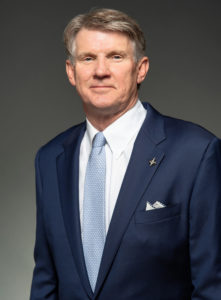 Michael R. Williams, MD, DO, MBA
Michael R. Williams, MD, DO, MBA
2013-2022
Dr. Williams served as the sixth president of HSC. A Fort Worth native and the first HSC alumnus to serve as president, Dr. Williams practiced anesthesiology and critical care medicine in Texas for more than twenty years.
From 2008 to 2013, Dr. Williams served as chief executive officer of Hill Country Memorial Hospital – during which time the hospital received numerous state and national awards becoming a Truven Top 100 U.S. hospital in 2012 and 2013. Under his leadership, the hospital was also awarded the 2013 Malcolm Baldrige National Presidential Best Practice for Leadership Award and named a Top 10 finalist for the 2013 Malcolm Baldrige National Presidential Quality Award. Hill Country Memorial Hospital went on to win the 2014 Malcolm Baldrige National Presidential Quality Award.
In 2011, Governor Rick Perry appointed Dr. Williams to serve on the University of North Texas System Board of Regents. He was later appointed to serve on the Texas Wesleyan University Board of Trustees in 2013.
Dr. Williams completed his anesthesiology and critical care training at the University of Texas Southwestern Medical School in Dallas and the Texas Heart Institute in Houston following achieving two medical degrees. Dr. Williams holds board certifications in both anesthesiology and critical care medicine by the American Board of Anesthesiology.
A successful business executive and entrepreneur, Dr. Williams also holds an MBA from Duke University and a Master’s in Health Care Management from Harvard University. Dr. Williams has founded companies in several industries including health care, mortgage, and software.
Dr. Williams has been named a Fellow of the American College of Health Care Executives and a Fellow of the American College of Chest Physicians. In 2013, Dr. Williams was named to the U.S. News and World Report’s Advisory Council for the Healthcare of Tomorrow and remains an active member.
Under Dr. Williams’ leadership, HSC has embraced a values-based, collaborative, and innovative team culture. During the COVID-19 pandemic, HSC stepped up for the DFW community leading efforts on health literacy, contact tracing, testing, and vaccinations.
HSC’s financial position was significantly strengthened under Dr. Williams. Reserves were nearly tripled, total assets doubled and the overall net position more than tripled. Beyond his many accomplishments, Dr. Williams’ strong business acumen has encouraged significant growth at HSC, all while never raising tuition during his tenure.
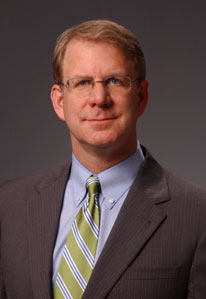
Scott B. Ransom, DO, MBA, MPH
2006-2013
Dr. Ransom served as the fifth president of UNT Health Science Center in Fort Worth starting in 2006. During his six years of leadership, Dr. Ransom oversaw a 73 percent increase in overall enrollment (1,949 students); helped established the UNT System College of Pharmacy (scheduled to open August 2013); brought research expenditures to a record $42 million; profitably grew the multi-specialty UNT Health group practice into one of the largest in Tarrant County (with an estimated 553,000 annual patient encounters) and implemented the 112,000-square-foot Medical Education Training facility (which is LEED Gold Certified) on the UNTHSC campus.
Prior to joining the Health Science Center, Dr. Ransom served as the executive director of the program for healthcare improvement and leadership development and professor with tenure in obstetrics, gynecology, health management and policy at the University of Michigan in Ann Arbor. His research efforts brought grant funding from the National Institutes of Health, the National Science Foundation, the Department and Veterans Affairs, and others.
Prior to joining the University of Michigan, Dr. Ransom served as vice president for medical affairs and then senior vice president and chief quality officer at the Detroit Medical Center, a $1.8 billion, seven-hospital health care system.
He is a past president of the American College of Physician Executives and past chair of the Certifying Commission in Medical Management. He has served on several national boards including the Healthcare Leadership Institute for General Electric Corporation, the Center for Innovation of the National Board of Medical Examiners, the Institute for Research on Women and Gender, Botanical Research Institute of Texas, and others. He serves on several community boards, including: Fort Worth Chamber of Commerce, Longhorn Council’s Boy Scout Foundation and Executive Boards, Fort Worth Library Foundation, the Tarrant County Medical Society, the American Heart Association-South West Affiliate, United Way of Tarrant County, and others.
Dr. Ransom earned a medical degree from the Kansas City University of Medicine and Biosciences; a master of business administration degree from the University of Michigan in Ann Arbor; and a master of public health degree from Harvard University in Boston. He completed a residency in obstetrics and gynecology at Oakwood Hospital/University of Michigan in Dearborn and completed the Program in Clinical Effectiveness at Harvard University. Dr. Ransom is also a graduate of the U.S. Marine Corps Officer Candidate School.
Dr. Ransom is a fellow in many professional organizations including the American College of Obstetrics and Gynecology, the American College of Surgeons, the American College of Physician Executives, and the American College of Healthcare Executives. He has published more than 140 articles, chapters, abstracts, and eight books on topics related to clinical improvement, women’s health, quality, and leadership. His most recent book, The Healthcare Quality Book: Vision, Strategy and Tools, provides a roadmap to improving health care quality.
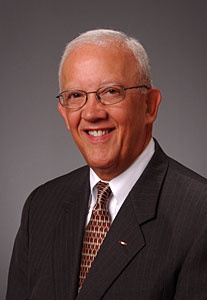
Ronald R. Blanck, DO
2000-2006
Dr. Blanck an internal medicine specialist, became the UNT Health Science Center’s fourth president after retiring in 2000 from an illustrious 32-year military career. He moved to Texas after serving as the highest-ranking physician in the armed forces, the Surgeon General of the United States Army and commander of the U.S. Army Medical Command, which gave him responsibility for more than 46,000 military personnel and 26,000 civilian employees throughout the world.
Dr. Blanck had previously served as commander of Walter Reed Medical Center North Atlantic Region Medical Command and director of professional services and chief of Medical Corps Affairs for the U.S. Army Surgeon General. His academic credentials included teaching positions at the Uniformed Services University School of Medicine, Georgetown University, George Washington University, Howard University School of Medicine and the University of Texas Health Science Center at San Antonio.
Dr. Blanck led the expansion of all programs within the Health Science Center and created a fourth school, the School of Health Professions. During his tenure, enrollment almost doubled to more than 1,000, and the campus expanded to include a six-story Center for BioHealth and two parking garages. Dr. Blanck also increased hospital partnerships, helped bring the first federally funded Community Health Clinic to Fort Worth, and expanded biotechnology incubator activities with the city. Also, the institution’s first two endowed chairs were established: the Osteopathic Heritage Foundation Distinguished Chair of Clinical Research and the Dallas Southwest Osteopathic Physicians Chair in Clinical Geriatrics.
In 2001, the National Osteopathic Research Center was founded and the Texas Missing Persons DNA Database was established on campus. In 2002, TCOM was ranked for the first time in the top 50 medical schools in primary care by U.S. News & World Report and the Graduate School of Biomedical Sciences received the National Science Foundation’s Presidential Award for Excellence in Science Mentoring. In 2004, Alumni Plaza was dedicated as a tribute to the more than 3,000 students who had graduated since the institution’s founding in 1970. In 2005, the Health Science Center collaborated with Radiology Associates of Tarrant County to open a state-of-the-art imaging center in the Center for BioHealth. Also in 2005, the physical growth of the Health Science Center was guaranteed when Dr. Blanck oversaw the purchase of the former Osteopathic Medical Center of Texas property, which increased the campus to more than 30 prime acres in the heart of Fort Worth’s Cultural District.
During his time at the Health Science Center, Dr. Blanck acted as an adviser on bioterrorism issues and an expert in preparing the medical community to respond to mass casualty incidents or those involving weapons of mass destruction. He also chaired the task forces on bioterrorism for the Texas Medical Association and the American Osteopathic Association. Dr. Blanck retired and moved back to the Washington, D.C., area in 2006.
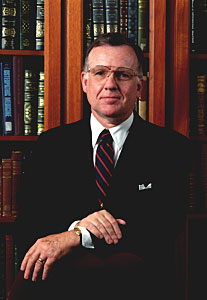 David M. Richards, DO
David M. Richards, DO
1986-1999
Dr. Richards a native Ohioan, became TCOM’s associate dean for academic affairs in 1981, vice president and dean for academic affairs in 1983, interim executive vice president in 1984 and president in 1986. He had practiced family medicine in Ohio since 1961 and had been the founding chairman of the Department of Family Medicine and associate dean for academic and clinical affairs at Ohio University College of Osteopathic Medicine.
During Dr. Richards’ 13-year presidency, the Texas College of Osteopathic Medicine evolved into the UNT Health Science Center with the addition of the Graduate School of Biomedical Sciences in 1993, the addition of a Physician Assistant Studies Program in 1997 and the establishment of the School of Public Health in 1999.
Research also thrived, and the Health Science Center developed the fastest-growing academic research program in Texas. Five Institutes for Discovery were established to nurture groundbreaking programs in aging and Alzheimer’s disease, cancer, cardiovascular disease, vision and physical medicine. The DNA/Identity Laboratory, originally funded to reduce the backlog of paternity cases pending in state courts, opened in 1990.
Dr. Richards also oversaw dramatic campus improvements with the opening of the four-story Gibson D. Lewis Health Science Library in 1986 – dedicated in 1993 as the Gibson D. Lewis Health Science Library – and the six-story Patient Care Center. The entire campus went smoke-free – the first medical school in Texas to do so. And, TCOM’s clinical practice plan grew into Tarrant County’s largest multi-specialty group practice, a distinction it maintains to this day.
Dr. Richards was the first osteopathic physician elected to the National Board of Medical Examiners and one of the first D.O.s appointed to the Veterans’ Administration Special Medical Advisory group. He chaired the board of governors of the American Association of Colleges of Osteopathic Medicine and, locally, chaired Fort Worth’s Strategy 2000 Biomedical Technology Planning Committee, which led to the opening in 1998 of the MEDTECH business incubator, a continuing partner in the Health Science Center’s biomedical research and development activities.
Dr. Richards retired in December 1999 and returned with his family to their home state of Ohio.
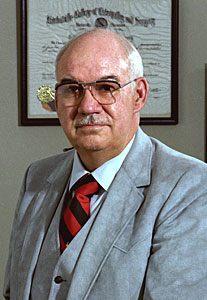 Ralph L. Willard, DO
Ralph L. Willard, DO
1981-1985
Dr. Willard, the son of two osteopathic physicians, had been a decorated World War II bomber pilot, a successful surgeon in his native state of Iowa and assistant dean for clinical affairs at the Michigan State University College of Osteopathic Medicine when he assumed the position of dean of the Texas College of Osteopathic Medicine in 1975. He became the second president of TCOM in May 1981 when the North Texas State University Board of Regents and the Legislature signaled their confidence in the development of the medical school as a separate institution by creating the position of president of TCOM. They also stipulated that the president must be an osteopathic physician and would be
responsible to the Board through a Chancellor who would serve both institutions.
Dr. Willard led the evolution of TCOM’s physical presence from a renovated bowling alley and assorted leased facilities into a modern campus of significant impact in Fort Worth’s renowned Cultural District. The eight-story Medical Education Building 1 (now Administration and Education) was completed in 1978 and the five-story Medical Education Building 2 (now Research and Education) – which finally brought together all basic science teaching and research in one area – was completed in 1982. Despite depressed economic conditions in Texas and legislative concern over the expenditure of funds, Dr. Willard persisted in his call for construction allocations from the State, and groundbreaking for TCOM’s third and most architecturally striking building was held in 1984, nine months before Dr. Willard left his post as president. Dr. Willard received the TCOM
Founder’s Medal in 1985 and was named associate dean of the West Virginia School of Osteopathic Medicine in 1988.
During Dr. Willard’s tenure as dean and president, TCOM also issued two of three groundbreaking goals statements that would permanently guide the school’s areas of emphasis: education, research and community service. The statements defined how the people and programs of TCOM should contribute to finding solutions to America’s health care problems, to preventing disease and to fostering collaborative biomedical research initiatives.
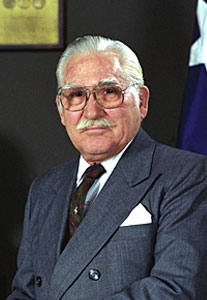
Marion E. Coy, DO
1973-1975
Dr. Coy a general practitioner and anesthesiologist from Jackson, Tennessee, was president of the American Osteopathic Association in 1971 when TCOM co-founder and fellow AOA board member George Luibel, D.O., approached him during an AOA board meeting and asked if he would consider becoming the first president of the Texas College of Osteopathic Medicine. After a tour of TCOM, Dr. Coy said yes. He divided his time between his national post and TCOM for the duration of his AOA presidency, and then devoted his full attention to the fledgling school as of August 1, 1972.
Under Dr. Coy’s leadership, TCOM earned full accreditation from the AOA Bureau of Professional Education and full recognition from the Texas State Board of Medical Examiners. Dr. Coy opened TCOM’s first two community healthcare clinics – one urban, one rural – and in 1974 he presided at the graduation of TCOM’s first class of 18 Doctors of Osteopathy.
During TCOM’s formative years, growth and financial stability through a formal affiliation with a state institution was a priority for the school, and ensuring that Texas had an adequate supply of physicians was a priority for the State. Dr. Coy traveled constantly, telling the TCOM story to the public and to legislators, and attending every meeting of the Texas Higher Education Coordinating Board. He successfully rallied statewide support, and in May 1975 the Texas Legislature passed Senate Bill 216, which made TCOM a state-assisted medical school under the jurisdiction of the North Texas State University Board of Regents.
Upon state affiliation, the position of chief executive officer at TCOM became a deanship. Dr. Coy relinquished his presidency and returned to teaching. From 1975 until his retirement in 1983, Dr. Coy shared his expertise with student physicians as a professor of osteopathic philosophy, principles and practices. He received the school’s highest honor, the TCOM Founders’ Medal, in 1981 and was named TCOM’s first professor emeritus in 1982. Dr. Coy died November 1, 2001, at the age of 91.

Social media